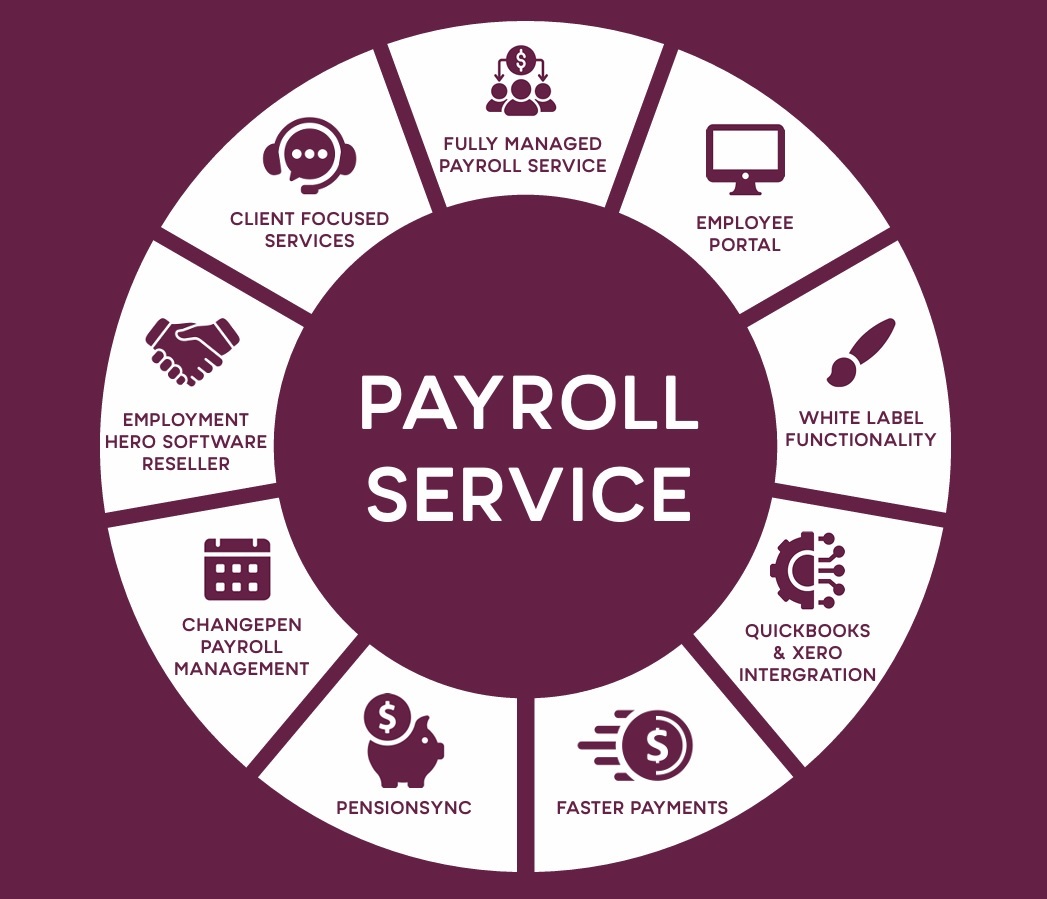Browsing the Complexities of Pay-roll Administration: Ideal Practices and Proven Solutions for Accurate Pay-roll Handling

Comprehending Tax Obligation Regulations
Navigating the ins and outs of tax obligation guidelines is necessary for effective pay-roll administration. Comprehending tax guidelines is paramount in making sure compliance and accuracy in payroll handling.
To browse tax obligation policies efficiently, payroll managers must stay notified concerning changes in tax regulations and laws at the government, state, and local levels. This calls for constant discovering and professional development to keep a high level of experience in tax. Furthermore, leveraging payroll software program and tools that automate tax obligation calculations and conformity processes can streamline pay-roll operations and reduce the danger of errors.
Applying Reliable Payroll Software Program
Efficient execution of payroll software program is essential for optimizing pay-roll processes and making sure accuracy in economic transactions. When picking a payroll software program service, it is vital to think about the certain needs of the company, such as the number of workers, the intricacy of pay structures, and combination needs with other systems.
To implement payroll software application successfully, start by carrying out a complete analysis of the present payroll procedure to recognize locations for improvement and personalization. Expert payroll management for Singapore businesses. It is suggested to entail key stakeholders from HR, financing, and IT divisions to ensure that the chosen software application satisfies all essential needs
Educating employees on how to use the software efficiently is likewise vital for successful application. Supplying detailed training sessions and sources can aid decrease mistakes and enhance overall productivity. Additionally, ongoing support and routine software application updates are vital to ensure the system remains compliant with altering regulations and proceeds to fulfill the organization's demands. By complying with these best practices, businesses can streamline their pay-roll procedures and decrease the risk of mistakes and conformity problems.
Ensuring Data Accuracy and Protection
After carrying out efficient pay-roll software application to maximize processes and ensure monetary accuracy, the following crucial action is to concentrate on making sure the data precision and security of the pay-roll system. Data accuracy is extremely important in payroll monitoring to avoid mistakes that can result in conformity concerns, financial disparities, and employee discontentment. Implementing data recognition checks, conducting routine audits, and keeping up-to-date worker documents are important techniques to promote accuracy.
Along with precision, payroll data safety is essential to secure delicate employee information and prevent unauthorized read review access. Using encryption techniques, limiting accessibility to authorized personnel only, and carrying out safe and secure login protocols are effective strategies to enhance data safety and security. Expert payroll management for Singapore businesses. Regularly updating security steps, carrying out safety training for staff members, and monitoring system activities can help reduce prospective safety dangers
Enhancing Pay-roll Procedures
Exactly how can pay-roll procedures be optimized for increased performance and efficiency? Improving pay-roll processes involves implementing methods to simplify and quicken the numerous jobs included in pay-roll management.
One more essential facet of simplifying payroll procedures is establishing standardized and clear treatments for payroll jobs, such as data entrance, approvals, and coverage. By defining duties and obligations within the payroll process, companies can guarantee liability and effectiveness. Normal training sessions for payroll personnel can additionally assist in maintaining them updated on the most recent guidelines and best methods, hence enhancing the general pay-roll process.
Additionally, integrating payroll systems with various other human resources and bookkeeping software can enhance information sharing and eliminate the requirement for hand-operated data entrance throughout numerous platforms. By systematizing pay-roll data and processes, companies can achieve greater accuracy, conformity, and performance in handling their payroll operations.
Compliance With Labor Regulations and Rules
To read the full info here make sure the structured pay-roll procedures are conducted according to legal demands, companies need to focus on conformity with labor regulations and laws. Abiding by labor regulations is important to avoid possible lawful repercussions, penalties, and damage to the firm's reputation. Compliance involves properly translating and executing regulations connected to minimal wage, overtime pay, record-keeping, tax obligation withholding, and employee category. Furthermore, staying updated on changes in labor regulations is important to avoid non-compliance concerns.
Organizations can accomplish conformity by establishing clear pay-roll policies and procedures that align with appropriate labor regulations. Routine audits of payroll procedures can aid recognize any kind of inconsistencies and guarantee rehabilitative actions are taken without delay. Educating team entailed in payroll management on labor regulations can also i was reading this improve conformity initiatives and reduce errors.
Moreover, leveraging pay-roll software application with built-in conformity functions can improve procedures and decrease the threat of non-compliance. Seeking advice from attorneys or specialists focusing on labor laws can assist and provide useful insights navigate complicated governing requirements. Ultimately, prioritizing conformity with labor laws and regulations is essential to keeping a trustworthy and lawfully audio payroll system.
Conclusion
In conclusion, understanding the intricacies of pay-roll administration requires an extensive understanding of tax laws, reliable payroll software application implementation, data accuracy and protection actions, structured procedures, and conformity with labor laws. By adhering to ideal methods and tried and tested remedies, companies can ensure precise payroll handling and prevent costly mistakes. It is important for organizations to prioritize payroll monitoring to keep economic stability and conformity with regulatory needs.

After applying reliable pay-roll software program to maximize procedures and make certain monetary accuracy, the next critical step is to focus on ensuring the data accuracy and protection of the pay-roll system. Simplifying payroll processes involves carrying out approaches to simplify and accelerate the different tasks involved in pay-roll administration. Routine training sessions for payroll staff can likewise assist in maintaining them updated on the most current regulations and finest methods, therefore boosting the overall pay-roll procedure.
In conclusion, understanding the intricacies of pay-roll management needs a thorough understanding of tax laws, effective pay-roll software application implementation, data accuracy and protection procedures, structured procedures, and compliance with labor legislations.